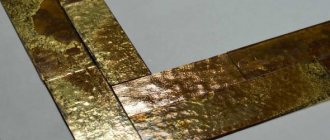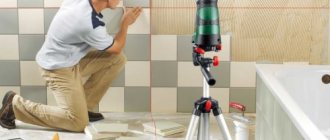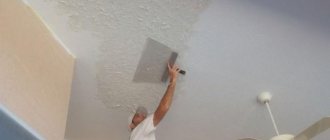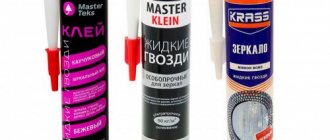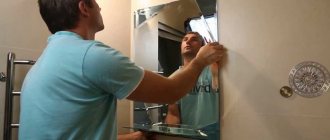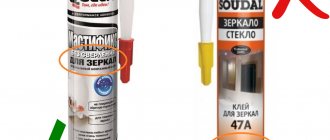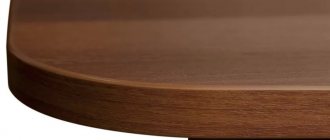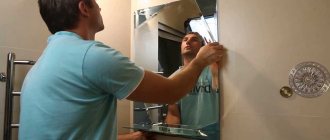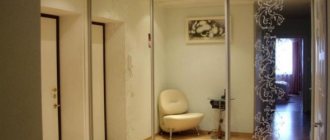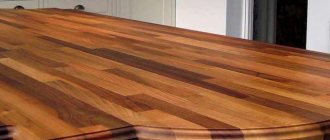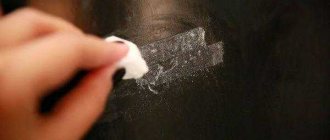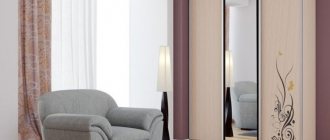A mirror is a fragile product that requires some care. This item is an integral part of every home and apartment. Situations often arise when it is necessary to fix glass on a smooth surface. There are a number of nuances here that a person should be aware of. It is also worth choosing the right substance that will give a reliable connection. Therefore, the editors of the YaNashla website have prepared for you a rating of the best glue for mirrors for 2022.
Adhesives and adhesives for mirrors
To glue a mirror, you need to select reliable and proven adhesives that can primarily withstand the product’s own weight. It is also worth considering temperature changes and humidity. Mirrors are a functional and aesthetic decorative element. Therefore, they are present in any home with rare exceptions.
When buying a mirror surface, the master is faced with the question of mounting it on the wall, furniture or door. There are several mounting options. Construction stores offer the buyer a wide range of adhesive mixtures for work. However, it makes sense to talk about the most popular ones.
There is no need to be afraid of such a method as gluing; in many cases this is the best choice for many reasons.
Soudal glue
Soudal mirror adhesive is one of the popular adhesives that can withstand prolonged exposure to moisture. It is made on the basis of synthetic rubber. Used for decorative finishing of mirror surfaces in rooms with high humidity: bathrooms, kitchens, swimming pools.
Advantages of Soudal glue:
- Resistant to moisture.
- High adhesion to most surfaces.
Before gluing the mirror to the wall in the bathroom, you need to read the instructions on the packaging of the product. When installing, keep in mind that this adhesive contains a solvent.
Tytan glue
You can glue a mirror in the bathroom using Tytan glue. This is a specialized adhesive composition, which is a mixture of rubber and synthetic resins.
Advantages:
- Possibility of gluing glass plates to surfaces made of different materials. It can be concrete, metal, ceramic tiles, wood, drywall.
- High strength index.
- Elastic seam, adhesive mass fills all voids.
- Resistance to prolonged exposure to moisture.
Before applying Titan glue, it is necessary to degrease the working area. The easiest way to apply it is with a special gun.
Loclite glue
To glue the mirror to the tile, you can use two-component Loclite adhesive. It is a mixture of acrylic ester and activator. This American brand is considered effective and reliable in the market among its competitors. When using it, you need to connect the components with identical parts. Apply evenly to the surfaces to be bonded.
Tile adhesive
You can try gluing the mirror in the bathroom using tile adhesive. This method is considered unusual, even original. When choosing a dry mixture, it is important to read the recommendations indicated on the packaging. If it does not indicate that the glue is not suitable for gluing mirrors, then it can be used.
To make the connection reliable, it is necessary to perform work according to a certain scheme. The decorative layer may need to be removed.
There are step-by-step instructions for this:
- Preliminarily mark the place where the mirror plate will be located.
- Remove the old tile, being careful not to destroy the surface underneath.
- Clear the wall. Knock off the old mortar.
- Prime the surfaces.
- Attach a horizontal bar to the bottom of the marked outline. Install a metal border on top of it.
- Attach another horizontal bar to the top.
- Install side curbs.
- Mix the dry mixture with water using a mixer. Apply tile adhesive to the free area of the wall with a spatula in an even layer.
- Slowly glue the bottom edge of the mirror plate to the glue. Place plastic crosses around the edges.
- Gently press the glass onto all surfaces.
Press the plate with your palms for 15-20 minutes so that the glue has time to set. Ultimately, wait for the tile adhesive to dry completely. The time period is indicated on the packaging. Remove the crosses and rub the seams.
Mounting double-sided tape
You can glue the mirror to different surfaces using mounting tape. With its help, you can fix the mirror plate on the wall without affecting the facing material.
It is a double-sided adhesive tape that needs to be secured to the back of the mirror plate. Next, you need to lift it to the required distance from the floor, set it level, lean it against the wall, press it with your palms, and hold it there for 5 minutes. It is necessary to clean the working surface from dust in advance and degrease it with alcohol.
Mounting tape is not suitable for large reflective panels. It won't support their weight.
Special compounds and liquid nails
If you have no experience in such a matter as attaching a mirror to a wall, then a hardware store can recommend liquid nails. This is another option that is safe for facing materials and provides reliable fastening. It is a special glue that firmly holds any objects together on vertical planes.
Installation:
- Using liquid nails, stick the metal profile to the wall along the contour of the glass.
- Fix plasterboard with increased water resistance on top of the profiles.
- Attach the mirror object to the prepared surface with liquid nails. It is enough to apply the adhesive mass along the contour in dots.
Liquid nails can withstand greater loads than mounting tape.
Types of materials
In the chemical industry you can find a number of different types of glue. Today, with the help of such products, there is an opportunity that allows a whole range of finishing materials to be attached without the use of nails, screws, and so on.
When fixing mirrors in this way, experts distinguish three types of different bases, for example :
- solvent-based;
- silicone-based composition;
- hybrid options.
Solvent based products
The option of using solvent-based glue is an economical case, where the product itself will be as cheap as possible. Such brands may write on their packaging that the product is intended for use with glass.
But, it is important to distinguish between the concepts of glass and mirrors . Quite often, manufacturers introduce a component into solvent adhesive that contains aggressive components. They, in turn, destroy the amalgam layer on the product. Such destruction of the mirror is a matter of time.
It is worth noting that damage becomes noticeable only after a certain point in time.
Silicone compounds
If the glue is made on the basis of silicone, then its chemical composition is neutral. Thus, if the contact is incorrect, there cannot be any side effects.
This glue is very practical for mirrors, because it helps to firmly connect the mirror to the wall. You should know that silicone products always take a little longer to dry than the previous option. Undoubtedly, the better the material, the greater its amount .
Hybrid options
Construction experts note the fact that working with hybrid-type compositions is undoubtedly easier. This is especially true for those people who do not have specific experience in construction and finishing work. It is important to understand that the cost of such material is even more expensive, but also of even better quality.
Mechanical fastening method
If the master could not find something to glue the mirror to the wall, he can use hardware. To do this, you need to select fasteners depending on the weight of the glass plate. This type of installation is suitable for fixing large mirrors.
Procedure:
- Make holes in the wall using a hammer drill or drill, depending on the surface material.
- Hammer in the dowels.
- The screws on both sides must be equipped with rubber gaskets so as not to damage the mirror surface. Screw them through the prepared holes.
If the glass does not have mounting holes, you can make them yourself.
To do this, you need to perform a number of actions:
- Use a sharp object to mark the centers for future holes.
- Using a diamond drill, start drilling. Allow the drill to cool frequently to prevent the glass from breaking.
- Using fine sandpaper, sand the edges of the holes.
It is important to perform all movements carefully, without pressure, so as not to damage the integrity of the plate.
How to glue a mirror on a mirror
Sometimes situations arise when you need to connect two mirror surfaces to each other. This is an unusual gluing method that requires the purchase of special glue for mirrors. You can glue mirrors with their edges to increase the size of the reflective surface or glue them with their surfaces facing each other. The first option is acceptable for connecting small glasses, since fastening the edges is considered less reliable.
How to glue a mirror to a wall
Once it has become known whether it is possible to glue the mirror to the wall, it is necessary to begin work.
To do this, there is the following step-by-step instructions:
- Prepare the surface for gluing. Clean from debris, degrease with medical alcohol or gasoline.
- Transfer the dimensions of the mirror to the wall. It is necessary to mark the dimensions with a marker so that you can see where to lean the plate.
- Apply glue to the back side of the mirror surface in dots along the contour. There should be approximately 2-3 cm of allowance left from the edges. Form a grid of glue on the central part of the product.
- Attach borders made of metal profiles along the edges of the frame marked on the wall.
- Install tiled crosses between the borders and the glass plate. Additionally, you can apply mirror glue to the wall.
- Carefully lean the mirror against the wall starting from the bottom mark. The movements must be carried out smoothly and the pressure must be controlled.
- The technician will have about 5 minutes to adjust the glass surface. After this, the glue will harden.
After the main adhesive mass has hardened, the borders are removed and the crosses are removed. The seams along the contour are filled with silicone or acrylic sealant.
For wallpaper
When gluing a mirror product to a wall with wallpaper, some problems may arise. If you lean the reflective plate against it over its entire area, it may not be in tight contact with the wall. Because of this, the integrity of the connection will be compromised, and the glue will not be able to firmly connect the materials. One option for creating a strong bond is to prepare the base.
Step-by-step instruction:
- From a sheet of DPV, cut out a rectangle with dimensions not exceeding the reflective surface. This can be done using a hand saw or jigsaw.
- To fix the fiberboard on the wall, you need to mark the places for fastening elements on it and accurately transfer them to the wall. Drill holes in the wall using a hammer drill or a drill in the fiberboard.
- Using dowels and screws, secure the sheet material made of wood fibers to the wall, while recessing the caps.
- Apply glue to the wood along the contour, departing 2 cm from the edges.
- Slowly place the glass piece against the prepared base. Hold for about 15 minutes with your palms, pressing lightly.
The heavier the mirror weighs, the more glue and fastenings for the fiberboard will be needed.
Concrete wall
You can attach a reflective surface to a concrete wall using tile mortar or special glue. Step-by-step instructions have been provided above. It is important to prime the concrete surface in advance to increase the quality of adhesion. A good solution is acrylic primer. It is better not to soak it with universal concrete contact; the adhesive composition may not withstand the weight of the mirror and peel off.
For paint
To attach a mirror to a painted surface using special glue, preparation is necessary. It consists of removing the decorative layer, cleaning and degreasing the working surface. Priming with a deep penetration compound is necessary, or a primer with increased adhesive characteristics is recommended.
Useful tips
It is best to carry out the work of gluing the rear view mirror at an ambient temperature of at least +20 degrees. Otherwise, you should drive the car into a heated garage or at least warm up the interior well by turning on the heater. If a two-component adhesive is used, it is recommended to apply the activator to the glass, and the adhesive itself to the mirror. Other useful tips when repairing mirrors are:
When disconnecting the rear view mirror, do not be upset. If you have high-quality glue, this problem can be eliminated in a matter of minutes, and you won’t have to spend money on paying for auto repair services.
Source
How to glue a mirror in the bathroom
Knowing what kind of glue to use to glue the mirror on the walls, you need to talk about the features of working in the bathroom. Constant exposure to moisture and changing temperatures entails rapid destruction of adhesive joints. The adhesive mass must be resistant to humidity and not afraid of temperature changes.
On tiles
Mirrors in the bathroom are somewhat more difficult to glue than in other rooms. This is due to the classic covering of most bathrooms - tiles. Features are associated with the last stage of the work - filling the seams with sealant.
Step-by-step instruction:
- Apply glue to the back side of the reflective plate. Leave about 2 centimeters from the edge. Fill the center with a lattice of adhesive mass.
- Place the mirror against the wall, starting from the bottom.
- Make a support in advance so that the product remains suspended without falling.
When the glue dries, you need to seal the seams with sealant. Acrylic is used for this.
How to glue a mirror to a closet
One of the most popular questions that owners of apartments and private houses ask during renovations is how to glue a mirror to a cabinet door. Initially, you need to think about what will be used for gluing. Having decided what to use to glue the mirror to the cabinet, you can begin further work.
Experienced craftsmen recommend using mounting tape to avoid damaging the front surface of the furniture. In this case, the tape is easier to remove later, although it will be a hassle. If glue is used, traces will remain if you want to dismantle it.
Step-by-step instruction:
- Mark the dimensions of the glass on the cabinet door. A black marker is suitable for this. You can remove the door from its hinges in advance to make it easier to work with. Wipe the surface with a cloth moistened with medical alcohol.
- Cut several small strips of tape and place them along the contour of the mirror plate, at a distance of about 30 cm from each other.
- Additionally, apply mirror glue to its back.
- Remove the protective layer from the mounting tape and lean the glass against the prepared cabinet door.
Quickly adjust the position of the mirror product using the marks. Knowing how to attach a mirror to a closet, you can decorate the interior and make the furniture more varied and functional.
To metal
Before gluing the mirror to the metal, you will have to make the right choice of adhesive from several types.
The most effective include:
- High temperature silicone. Withstands sudden changes in temperature (not only above zero), prolonged exposure to oils and washing liquids.
- Moment Crystal. An effective adhesive that returns to its original state after deformation.
- Epoxy adhesive. Two-component substances that are used to combine different or one property of materials. By mixing the two components, you can get an adhesive mass that hardens under the influence of room temperature.
- After choosing an adhesive, you can begin gluing the mirror onto a metal surface.
Step-by-step instruction:
- Degrease the metal using a solvent or medical alcohol, clean it from dirt, rust, and plaque.
- Clean decorative coatings with a grinder or grinder.
- Apply glue to the back of the reflective plate.
- Heat the glass evenly with a hair dryer to 30 degrees. It is important to slowly increase the temperature so that the mirror surface does not crack.
- Place the plate on a metal surface and hold for 5-10 minutes.
For reliability, you should pay attention to pre-treatment with epoxy primer. It will protect the metal from corrosion and provide better adhesion.
Thanks to additional heating, a more reliable connection and faster setting are obtained. The entire technology for working with cold welding can be read here.
On laminated chipboard or chipboard
To stick a mirror on laminated chipboard or chipboard, you can use mounting tape or liquid nails. The principle of operation is the same as with other surfaces. It is better to leave the glued structure overnight under a light load to create a stronger connection.
When it became clear how to glue a mirror to a cabinet, tile, metal, wood, concrete, or to walls with wallpaper, it was easy to carry out repair work yourself and decorate the interior. Pay enough attention to the choice of glue and follow the detailed instructions. You can't skimp on fasteners when it comes to large mirror plates.
Method 1: Repair using a hair dryer and a wand
We remove the hair dryer from the station. We set the temperature required for soldering ABS plastic to 300 °C. As the work progresses, the temperature should be adjusted if the plastic melts too much or, conversely, not enough.
We heat the rod with a hairdryer so that it becomes soft and almost begins to melt, and we do the same with the damaged area on the part. The mating part must be well heated, otherwise the adhesion will be poor and the resulting connection will be fragile. If the plastic of the part being repaired swells, it means the process is going correctly.
